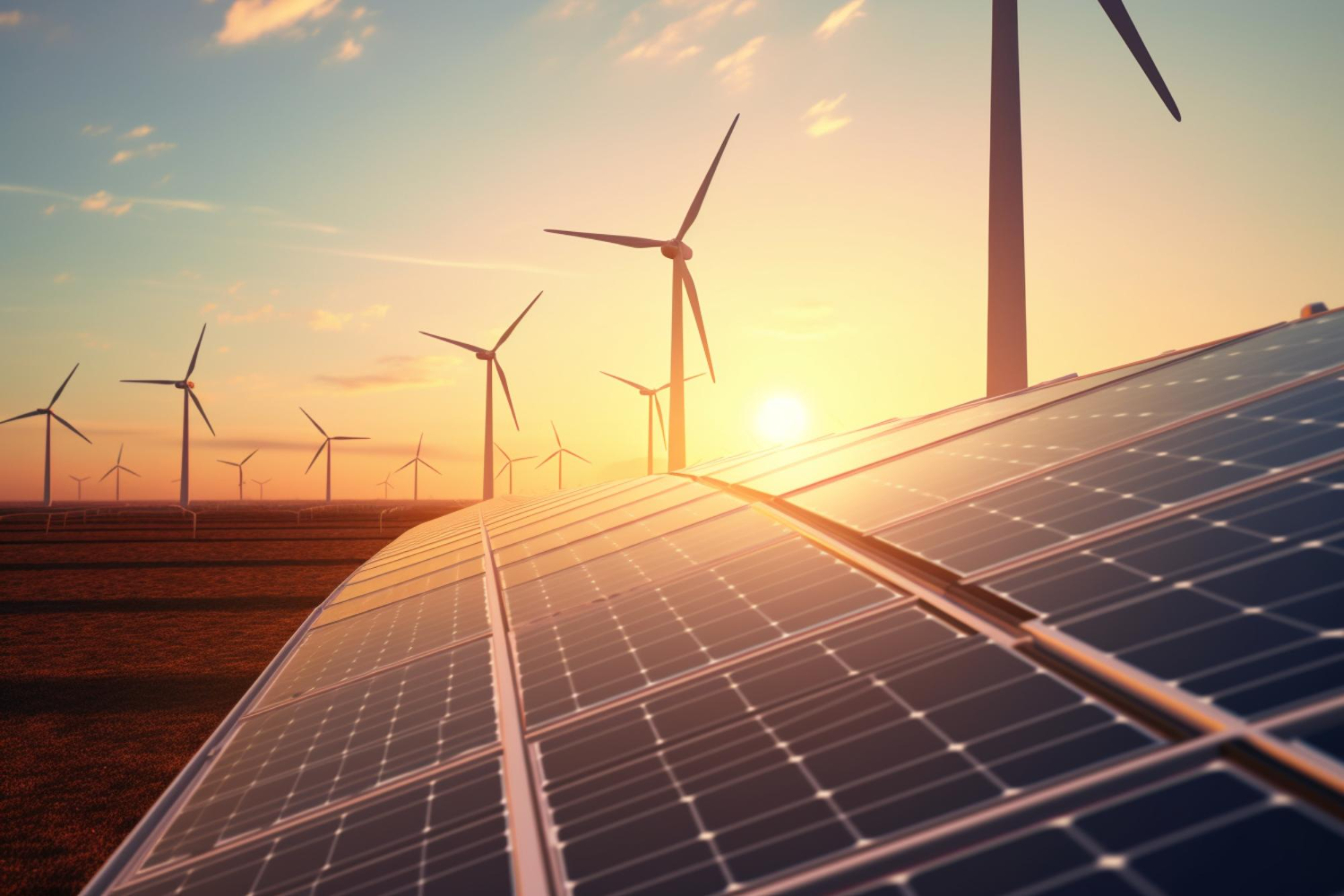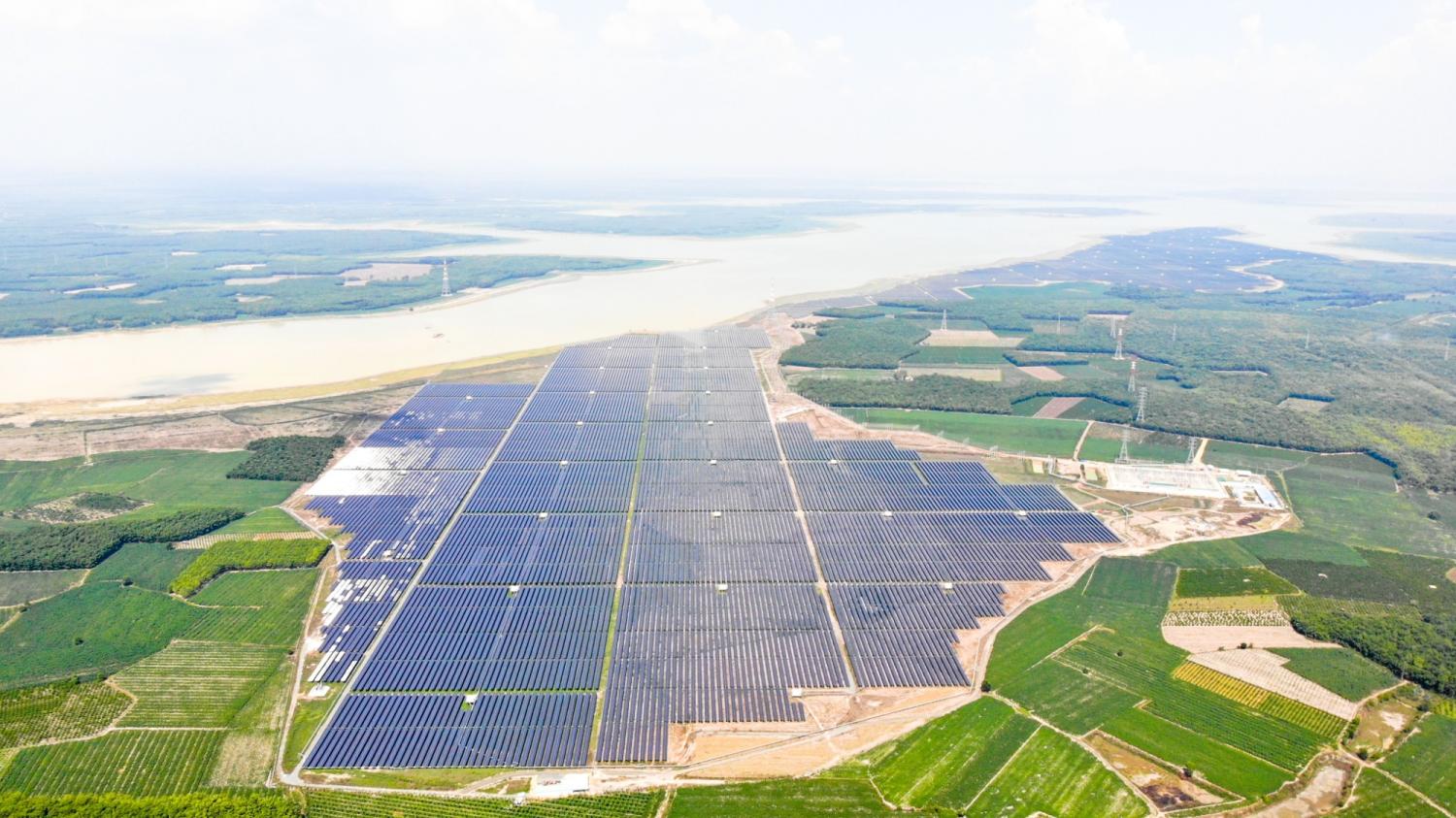
(Photo: Freepik)
Wind and Solar capacity in the ASEAN region increased by 20% in 2023, bringing the total to over 28 GW. According to a new report from Global Energy Monitor (GEM), the technologies now account 9% of electricity generating capacity in ASEAN countries.
Combined with a substantial base of hydropower, the growth in wind and solar brings the bloc close to its renewable energy capacity goal of 35% by 2025, GEM says.
Building an additional 17GW of utility-scale solar and wind projects in the next two years would be sufficient to achieve the target, it adds.
There is currently a total of 222 GW of announced, pre-construction and construction-stage utility-scale wind and solar capacity in ASEAN, according to GEM. Though now only 6 GW of these is being built.
However, ASEAN collectively have one of the fastest-growing economies in the world and have shown rapid recent electricity demand growth of 22% per year between 2015 and 2021. This has translated into continued support for gas and coal power in the region, even though demand growth is predicted to slow.
While renewable energy may temper the growth in fossil fuel demand, wind and solar expansion face regulatory barriers and a lack of supportive policy, GEM suggests.
Renewable energy achievements so far in ASEAN
According to GEM’s report, ASEAN added 3 GW of solar capacity last year, increasing installed capacity by 17% over 2022 levels.
Despite solar seeing a larger overall capacity rise, operational wind capacity saw a larger comparative increase, growing by 29%, or 2 GW, since Jan 2023.
Offshore wind now accounts for 2 GW of the operating 9 GW of utility-scale wind capacity in Southeast Asia.
Given the technical challenges and higher costs of offshore wind, this is particularly noteworthy, GEM says.
By far, Vietnam has the largest utility-scale solar and wind capacity among all ASEAN nations.
The rise in utility-scale solar and wind capacity over the past year has come as a result of a supportive policy across many countries in the region, says GEM.

Dau Tieng 3 Solar Power Plant in Vietnam. (Photo: PECC2)
For example, in 2017, Vietnam deployed a series of investment policies aimed at initiating utility scale-solar projects. Two feed-in-tariff (FiT) programs were implemented by the state-owned utility between 2017 and 2020.
But when these programs expired, Vietnam failed to implement a replacement. As the result, despite the country adding 12 GW of utility-scale solar capacity between 2019 and 2021, gaps in energy policy have begun to limit progress. Only 1 GW of utility-scale solar and wind was commissioned in 2022, in comparison with nearly 4 GW in 2021.
Thailand and Philippines currently have the second and third highest utility-scale solar and wind capacity in ASEAN, with 3 GW of operating capacity each.
GEM suggests that Thailand is the second largest economy in the region after Indonesia and has benefitted from being viewed as a “low-risk country” with few barriers for investment.
Meanwhile, the Philippines hosts a “streamlined project bidding system”, which allows for an “unencumbered pipeline of project development.”
Wind dominates the prospective capacity
According to GEM’s research, there is currently a total of 222 GW of announced, pre-construction and construction-stage utility-scale wind and solar capacity in ASEAN.
More than 80% of the prospective capacity in the region are in the Philippines and Vietnam, totaling over 185 GW.
Over 60% of the pipeline in Vietnam and the Philippines comes from planned offshore wind development, of 72 GW and 52 GW respectively.
The Philippines holds 45% of the prospective capacity in ASEAN. Through its Green Energy Auction Program (GEAP), the country aims to facilitate the development of over 11GW of renewable energy.
In March 2023, it held an auction securing just over 300 bids to develop 3 GW of solar, onshore wind and bioenergy with start dates between 2024 and 2026.
Offshore wind comprises 52% of the nation’s prospective utility-scale renewable capacity, with five times more offshore wind than onshore.
In April 2023, the Philippines issued an executive order outlining cooperation between private investors and the government on offshore wind. Since then, offshore wind contracts have more than doubled to nearly 80, representing a capacity of 61 GW.
Vietnam has over 86 GW of prospective capacity, including 72 GW of offshore wind. However, just 2% is currently under construction, due in part to the “lack of concise and reliable renewables policies that could serve as a crucial roadmap for project implementation”, according to GEM.
GEM considers an additional 40 GW of utility-scale solar and wind projects in Vietnam to be “shelved”, as there has been no progression or announcements in the past two years.



